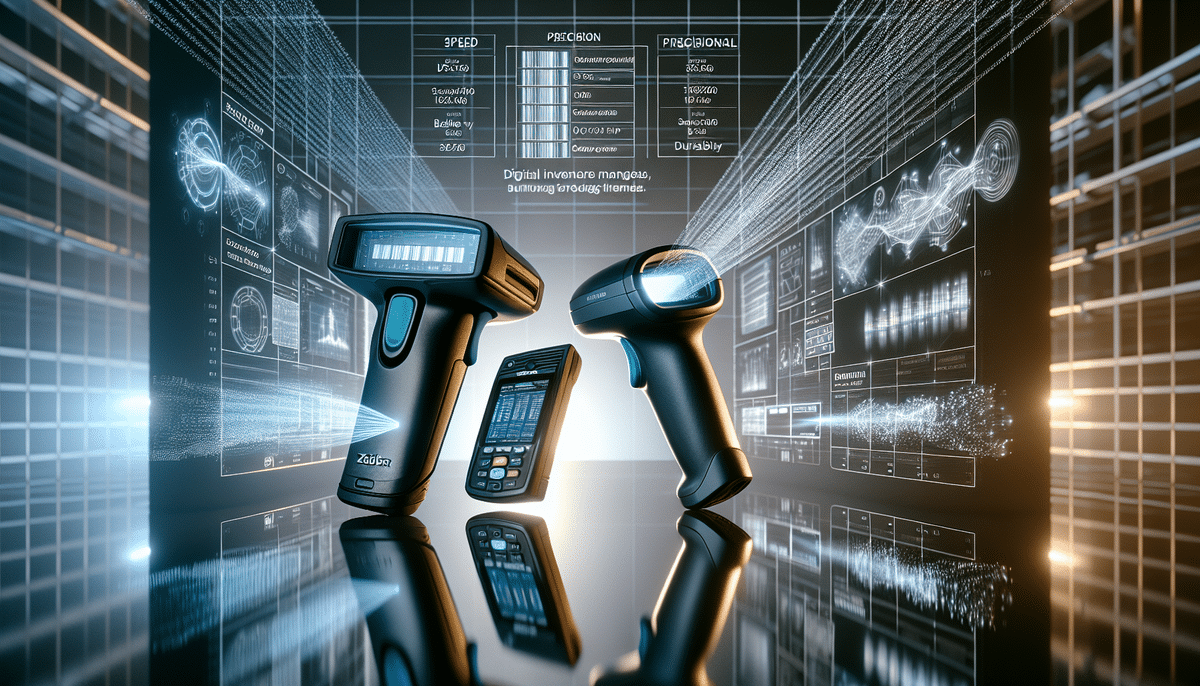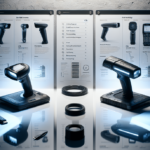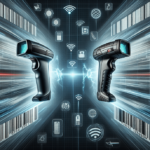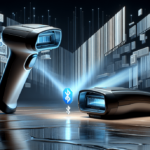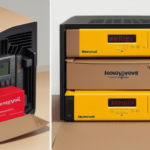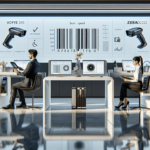Zebra DS8178 vs Honeywell Voyager 1200g: A Comprehensive Comparison
Barcode scanners are integral to modern business operations, enhancing efficiency from retail stores to healthcare facilities. Among the top contenders in the market are the Zebra DS8178 and the Honeywell Voyager 1200g. This comparison aims to provide an in-depth analysis of these two leading barcode scanners to help you determine which best fits your business needs.
Understanding Barcode Scanners
Barcode scanners are handheld devices designed to read and decode barcodes, which consist of lines of varying thickness and spacing representing product information. By transferring this data directly to a computer or device, barcode scanners eliminate manual data entry, reduce errors, and enhance operational efficiency.
Types of Barcode Scanners
- Laser Scanners: Utilize a laser beam to accurately read barcodes.
- CCD Scanners: Use an array of tiny light sensors to capture the barcode image.
- Image Scanners: Employ a camera to take a picture of the barcode and decode it using software.
Each scanner type offers unique advantages, allowing businesses to choose based on their specific requirements.
Importance for Businesses
Implementing barcode scanning technology is crucial for tracking inventory, pricing, and other product-related information. It streamlines operations, enhances accuracy, and ensures compliance with industry regulations. Additionally, barcode scanning can be leveraged for:
- Monitoring employee attendance and timekeeping
- Tracking shipments and deliveries
- Optimizing inventory levels and pricing strategies
According to a [report by Grand View Research](https://www.grandviewresearch.com/industry-analysis/barcode-scanning-market), the global barcode scanning market is expected to grow significantly, driven by the increasing demand for automation in various industries.
Product Features and Specifications
Zebra DS8178
The Zebra DS8178 stands out with its high-speed, omnidirectional scanning engine capable of reading barcodes from any angle, making it ideal for fast-paced environments. Key features include:
- Connectivity: Bluetooth and Wi-Fi
- Durability: Rugged design withstands drops from up to 6 feet
- Barcode Types Supported: 1D, 2D, and QR codes
- Battery Life: Up to 24 hours on a single charge
Additionally, the DS8178 offers advanced data capture capabilities, including image and signature capture, making it suitable for industries like healthcare and hospitality.
Honeywell Voyager 1200g
The Honeywell Voyager 1200g is renowned for its durability and precision. Its high-precision laser scan engine ensures accurate reading of even the smallest barcodes. Key specifications include:
- Connectivity: USB and serial
- Durability: Withstands drops from up to 5 feet
- Barcode Types Supported: Wide range, including small barcodes
- Warranty: Three-year warranty
The Voyager 1200g is designed for ease of use, featuring an ergonomic grip and lightweight build to reduce user fatigue during extended use.
Comparative Analysis
Scanning Speed and Capability
The Zebra DS8178 offers a higher scanning speed with its omnidirectional capability, allowing for rapid data capture from any angle. In contrast, the Honeywell Voyager 1200g, while slightly slower, provides exceptional precision, especially for small or dense barcodes.
Accuracy and Precision
Both scanners maintain high levels of accuracy. The DS8178 is optimized for speed, making it suitable for high-volume environments, whereas the Voyager 1200g excels in precision, ideal for applications requiring detailed scanning.
Battery Life and Durability
The DS8178 boasts an impressive battery life of up to 24 hours, outlasting the Voyager 1200g. Both devices are built to withstand drops; however, the DS8178 offers slightly higher drop protection (6 feet vs. 5 feet) and enhanced resistance to scratches and damage.
Ergonomics and User-Friendliness
Both scanners are designed with user comfort in mind. They feature lightweight builds and ergonomic grips, minimizing user fatigue. The Voyager 1200g includes an intuitive button layout, while the DS8178 incorporates advanced wireless connectivity options for flexible usage.
Pricing
Generally, the Zebra DS8178 is priced higher due to its advanced features like omnidirectional scanning and extended battery life. The Honeywell Voyager 1200g offers a more affordable option without compromising on essential scanning capabilities and durability.
Choosing the Right Scanner for Your Business Needs
When selecting between the Zebra DS8178 and the Honeywell Voyager 1200g, consider the following:
- High-Volume Scanning: Choose the Zebra DS8178 for faster and more versatile scanning capabilities.
- Precision Requirements: Opt for the Honeywell Voyager 1200g if your operations involve scanning small or intricate barcodes.
- Budget Constraints: The Voyager 1200g offers excellent value for its price, making it suitable for businesses seeking cost-effective solutions.
Assess your specific operational needs, volume of scanning, and budget to determine the most suitable barcode scanner for your business.
Future Trends in Barcode Scanning Technology
Barcode scanning technology continues to evolve, incorporating innovative features to enhance efficiency and user experience. Emerging trends include:
- Touchless Scanning: Enhances hygiene and speed by eliminating direct contact.
- Augmented Reality (AR) Integration: Provides real-time data overlays during scanning for enhanced information access.
- Voice Control: Enables hands-free operation, increasing efficiency in various applications.
These advancements are set to further streamline barcode scanning processes, making them more adaptable and user-friendly. As businesses continue to adopt these technologies, barcode scanning will remain a pivotal component in optimizing operations and maintaining competitive advantage.
Conclusion
Both the Zebra DS8178 and the Honeywell Voyager 1200g offer robust solutions for businesses seeking reliable barcode scanning technology. The choice between them hinges on your specific needs—whether it's speed and versatility or precision and affordability. By evaluating your operational requirements and budget, you can select the scanner that best enhances your business processes.

